The coffee industry is facing a complex moment: first, a high and volatile C Market coupled with accompanying huge global green coffee price increases and low global coffee stocks, and now the introduction of new tariffs across almost every coffee origin. While we discuss what’s happening in the C Market and every origin in which we work on a quarterly basis (look for our next report in the coming weeks), the roaster-level impact of the C Market’s recent spike above $4/lb and post-tariff fallout deserves its own exploration. To unpack how this moment is affecting roasters, we talked to a handful of roaster partners about what they’re seeing, how they’re staying ahead of it, and their thoughts on the future.
Prices & Tariffs: What’s Going On?
 ICE arabica futures are a financial-sector measurement of the value of green coffee at present and in the future. This price, and the actual prices of green coffee along with it, skyrocketed over the past several years, from a crisis-level low at under $1/lb in 2018 to an all-time industry high of $4.41/lb in February of this year. The furious spike was driven by fundamentals—extreme drought in Brazil, flooding in Vietnam, low stocks across the global north with little respite in sight due to the issues in Brazil and Vietnam—and then turbo-charged by speculators behind them.
ICE arabica futures are a financial-sector measurement of the value of green coffee at present and in the future. This price, and the actual prices of green coffee along with it, skyrocketed over the past several years, from a crisis-level low at under $1/lb in 2018 to an all-time industry high of $4.41/lb in February of this year. The furious spike was driven by fundamentals—extreme drought in Brazil, flooding in Vietnam, low stocks across the global north with little respite in sight due to the issues in Brazil and Vietnam—and then turbo-charged by speculators behind them.
To further complicate the picture, in early April US President Donald Trump implemented broad tariffs on imports. Almost all coffee-producing origins currently fall under tariffs ranging from 10-46% (currently paused at 10% for 90 days) on containers receiving a Bill of Lading after April 5. While the C Market has dropped since the imposition of tariffs (alongside the larger stock market), the immediate trading months in front of us remain in the mid $3.00 range, which would previously constitute an all-time high above 1977 levels. Costs on tariffs bring levels back closer to, or above, $4.00/lb.
While the premium specialty coffee sector has historically tried to decouple prices from the C Market, the C Market itself remains a driving factor in the trade. It affected the sector when prices were at their historic low, and it affects us even more when prices reach historic highs, as we’ve unpacked recently in our Q1 Origin & Shipping Report and those of prior quarters (stay tuned for our Q2 report soon, as we prep high-quality information post-tariff).
In terms of how all of this is hitting actual specialty roasters we work with, it’s different for everyone, but generally speaking, everyone is facing higher green coffee prices from all potential sourcing partners and origins than they were in prior years.
Raising Prices—Everyone’s Doing It
 One thing that was universal among those we talked to was this: roasters have either raised prices, both retail and wholesale, within the last couple years, or they’re doing so now.
One thing that was universal among those we talked to was this: roasters have either raised prices, both retail and wholesale, within the last couple years, or they’re doing so now.
Green coffee aside, roasters who run cafes as part of their business have seen not just green coffee costs go up, but also prices on other commodities like milk and cocoa products as well as labor—so retail price increases have been and continue to be a must for most coffee businesses.
On the wholesale side, many specialty roasters price single origin offerings individually based on their costs, so those prices have gone up but don’t stand out as much as increasing prices on blend products. However, as the C Market has risen and actual coffee prices at origin have followed, one of the biggest impacts has been on the prices not of the more boutique, expensive offerings but rather on the everyday drinker, blend-friendly coffees. This is particularly acute due to the coffee shortage in Brazil, which (among other factors) led to huge price increases on South American coffees like Colombia and Peru as they were snapped up by large buyers to fill contracts. As tariffs on other less-expensive origins Vietnam (46%) and Nicaragua (18%) are currently slated to be higher than many other origins (most of which are 10%), prices on formerly least expensive coffee origins will presumably go up.
Since blend component costs have gone up exponentially for roasters, they’ve had to raise wholesale blend prices accordingly.
“It’s really easy to say ‘raise prices,’ but another thing to actually look at the cost of living in your area and assess potential impacts,” says Toby Reif of Phoenix Coffee in Cleveland, OH. Operating in a city with an average median income of $39,000 per year and per-capita income of $27,000, and a poverty rate almost triple the national average, the team at Phoenix, which is collectively owned, was concerned. But, after spending time poring over the menus of brokers and sourcing partners, regions in which they operate, and local competitors, he was surprised to find that their pricing was actually really far behind comparable companies. For example, they were still selling a latte for $3.50.
They also assessed the sales breakdown and costs of individual items, breaking up products into tiers they could triage based on sales volume. They communicated heavily in advance with both wholesale and retail clients before and during the increase (more on that later), and ultimately brought their menu to parity with the larger region successfully. Some customers (both retail and wholesale) hit a point of price sensitivity and found coffee elsewhere, but the increase, while only bringing them up to parity with the local market, was more than enough to cover that difference and leave the company in better shape to face their actual costs.
Nick Wise of Heartwood, also in Northeastern Ohio, had raised prices within the last couple years, so Heartwood was in better shape to weather the situation than they would have been if they had waited. They’ve had to implement another small price increase, but because they didn’t wait too long when prices jumped in 2023, they’ve been better equipped to make smaller, less drastic price changes in this current moment. 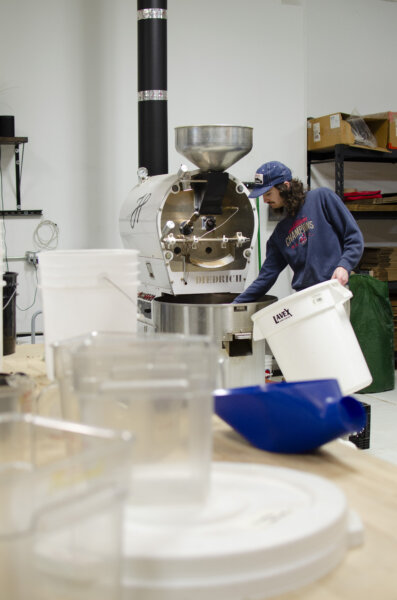 Sweet Leaf’s Rich Nieto (New York City) takes an extremely data-driven approach to the situation. An active stock trader, he watches the coffee market carefully in order to make the best decisions possible. As he watched prices soar to unprecedented highs, he knew a price increase was inevitable—not just for Sweet Leaf, but for everyone. “It’s only a game of who has more leeway,” he says, referring to larger companies with longer-term contracts from before prices spiked. “Coffee prices have risen over 200% since December 2023, so how can roasters only raise their prices 50c if they have to pay $2 more per pound?”
Sweet Leaf’s Rich Nieto (New York City) takes an extremely data-driven approach to the situation. An active stock trader, he watches the coffee market carefully in order to make the best decisions possible. As he watched prices soar to unprecedented highs, he knew a price increase was inevitable—not just for Sweet Leaf, but for everyone. “It’s only a game of who has more leeway,” he says, referring to larger companies with longer-term contracts from before prices spiked. “Coffee prices have risen over 200% since December 2023, so how can roasters only raise their prices 50c if they have to pay $2 more per pound?”
His goal has been to try to frame the increase to wholesale accounts as an opportunity. “When you raise prices in a coffee shop, you don’t raise prices by 8 or 12c, you typically jump up to the next quarter, so a dollar more per pound of coffee is only 5c more per cup,” he says. “If wholesale customers have to pay up to $2 more per pound, that costs 10c per cup, so if you raise your price 25c it will have no negative impact.” Going up to the next quarter mark won’t be a huge shock to New York consumers at the retail level, especially once you communicate that green coffee prices have gone up over 200% over the last 13 months.
He emphasized that it’s important to understand that this is something almost all roasters are facing. And, even though sometimes price increases lead to a slight dip in sales, that doesn’t mean they lead to a dip in revenue.
Will Pratt of Tandem Coffee in Portland, ME, also makes data-driven decisions. He built a costing spreadsheet where he puts in the cost of specific components and it gives him a cost breakdown for each product. He keeps different margins on different products, and is hoping to be able to maintain margin, but will adjust if he needs to. When we talked, Tandem was about to raise wholesale and retail prices for the first time in 2 years. Will’s hope is that people seem to be talking about coffee costs in a mainstream way—he even had a wholesale account reach out and ask how they’ve gone so long without having to raise prices. As we’ll delve into, communication of the simple facts that lead to this increase is key, and Tandem planned an email to communicate the increase considerately.
While raising prices is scary for any business owner, Matthew McDaniel of Cooperative Coffee in Asheville saw an opportunity to discuss coffee’s historical undervaluation and hopefully introduce more sustainable pricing and greater understanding. “When the C Market price was $1-2 dollars per pound, we knew the cost of production was greater than income. Coffee producers work hard and their product has huge inherent value—something we take for granted as a quick pick-me-up is actually the product of immense labor, so many factors going right, and complex international logistics,” he says.
Asheville is small with a large surrounding rural population and a mixed understanding of specialty coffee, so Cooperative tried to avoid a price increase as long as they could. Over 2024, they bore cost increases without raising prices, sinking over 50% of their costs into green coffee and knowing it was not sustainable. They arrived at their current price increase by deciding to plan around prices that they would feel good about paying for green coffee going forward—for more basic blend components, $5/$5.50 per pound on average, and for higher-end coffees and decaf offerings, $6 per pound on average. Reverse engineering for those green costs to be financially sustainable allows them to remain solvent and continue to pay the prices they want even if the C Market dips in the future.
Cooperative put out a succinct yet detailed newsletter to their wholesale clients, explaining the cost breakdown and the ways in which the situation could present a huge step forward for the industry and producers, making coffee more sustainable long-term. Matthew expressed empathy to those on the retail side seeing costs go up, especially since Cooperative only opened their first cafe last May after years of a wholesale-only model. “Cafe owners getting squeezed isn’t a solution either—everyone in the supply chain has to be able to make a healthy living.” Ultimately, he feels consumers will have to bear their share. More on the email below, but the response was overwhelmingly positive.
Communication, As Always, Is Key
 The best way the roasters we talked to have found to cushion any blows that have occurred or may occur in the future is communication. Talking to sourcing partners helps them stay aware of what’s coming and why, and when they find clear, strategic ways to pass that knowledge onto their consumers, they’re able to ease the impacts on cost increases at every level of the chain at which they operate.
The best way the roasters we talked to have found to cushion any blows that have occurred or may occur in the future is communication. Talking to sourcing partners helps them stay aware of what’s coming and why, and when they find clear, strategic ways to pass that knowledge onto their consumers, they’re able to ease the impacts on cost increases at every level of the chain at which they operate.
Nick Wise of Heartwood says increasing communications with sourcing partners has helped him immensely—“having a very open conversation about what they’re going through on the buying side, hearing that and giving them feedback on how that affects us.” He’s developed a lot of trust with his importer partners, and that means when prices come up, he understands exactly why and knows they aren’t being opportunistic, just like he isn’t being opportunistic toward his own customers.
At Phoenix, Toby Reif emphasized how communication has been essential internally in order to succeed externally. They’re employee-owned, with about 50% of the company made up of employee-owners, which means they have an extremely transparent and inclusive meeting structure with granular detail on operating costs. Everyone, baristas included, was prepped for any customer frustration when prices increased, because they were all intimately familiar with sales reports and costs of goods and services (COGS). Some workers are having those conversations with customers while others are having them with sourcing partners, facilitating dialogue that allows everyone to feel more empowered to discuss the current price landscape. “We started those conversations far in advance and got everyone prepped; it may not make the customer feel better but it will make for a more effective team,” says Toby. The results have been positive financially. They saw some grumbling, but there were others who expressed surprise it had taken so long.
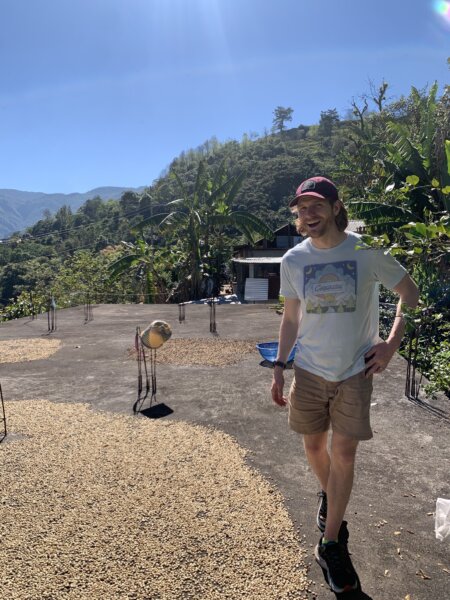 Matthew McDaniel of Cooperative focused on a message of transparency and shared empowerment to move the local coffee community forward into a paradigm shift of more sustainable pricing for producers. “We all need to work together to communicate the true value of coffee,” he says. In a quick but thorough email breakdown, he disclosed cost specifics, from green coffee costs to other operational costs like moisture loss on roasting, freight, and more. “If people just hear green coffee costs $4-5 per pound, they aren’t going to understand the whole picture,” he says. Cooperative encouraged wholesale clients to raise prices too, to a level that is sustainable for them, and utilize clarity and communication to help customers truly understand how magical coffee is.
Matthew McDaniel of Cooperative focused on a message of transparency and shared empowerment to move the local coffee community forward into a paradigm shift of more sustainable pricing for producers. “We all need to work together to communicate the true value of coffee,” he says. In a quick but thorough email breakdown, he disclosed cost specifics, from green coffee costs to other operational costs like moisture loss on roasting, freight, and more. “If people just hear green coffee costs $4-5 per pound, they aren’t going to understand the whole picture,” he says. Cooperative encouraged wholesale clients to raise prices too, to a level that is sustainable for them, and utilize clarity and communication to help customers truly understand how magical coffee is.
“I was so scared sending out this email,” said Matthew. “There’s always going to be someone with cheaper coffee. But the response has been incredible, the outpouring of love and support and gratitude, it’s been overwhelming.”
We talked with Will Pratt of Tandem right after his team met to outline the emails needed to send out to wholesale and retail newsletter subscribers about their price increases—internal and external communications, as well as frank conversations with sourcing partners, are a core part of their operational strategy.
“It would be great if more roasters were open with each other and less secretive,” says Sweet Leaf’s Rich Nieto. “This is affecting all of us, so we need to band together and not be afraid of being undercut by each other when, universally, we all need to raise prices.”
When it comes to tariffs, one of the silver linings of their broad application is that they’re top of every news site and consumers are aware of them—the costs that tariffs bring into the picture won’t be a surprise to consumers, even though they won’t be welcome, either.
Don’t Sacrifice Quality
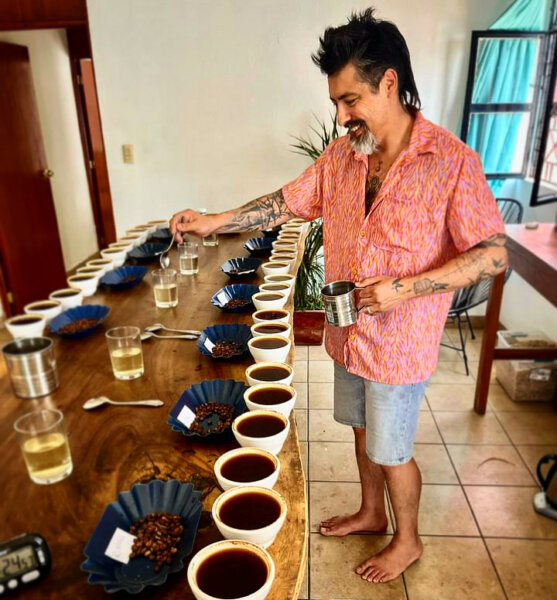 If quality is part of your business model, it’s probably not a great idea to race to the bottom—especially because what’s gone up the most in price is basic blend components, with Brazil being in shortest supply and potential high tariffs on Vietnam (currently slated for 46% in 90 days and 10% currently, although the situation is fluid).
If quality is part of your business model, it’s probably not a great idea to race to the bottom—especially because what’s gone up the most in price is basic blend components, with Brazil being in shortest supply and potential high tariffs on Vietnam (currently slated for 46% in 90 days and 10% currently, although the situation is fluid).
“I’m still trying to book amazing coffees whenever I can, and if it costs a little more then it’s easier to integrate since I understand exactly why it’s happening,” says Nick Wise of Heartwood. Through communication with sourcing partners, there’s no mystery to why coffees are more expensive.
Matthew McDaniel doesn’t plan to compromise on quality, and feels reassured by the communal acceptance of their price increase that they won’t have to. “If we have a wholesale customer that doesn’t get it, and they just want to find cheaper coffee, we have to be okay with that. We don’t want to race to the bottom, and we need to be real about that.”
Will Pratt’s approach at Tandem is to adjust margins on specific products rather than going after quality if sales drop.
Every roaster should know their menu and where and how they can compromise on quality, says Rich Nieto of Sweet Leaf. For instance, on their heavily flavored Rocket Fuel, they need a coffee that dark-roasts well and offers a clean starting point for the other ingredients. But when it comes to their espresso blend, they won’t compromise and will pay whatever they have to
“I’ve never been the kind of person who sources by asking what’s cheap,” says Toby Reif of Phoenix. “No one in specialty does this because it’s easy, we do it because it’s a meaningful thing to do with your time.”
Get Creative
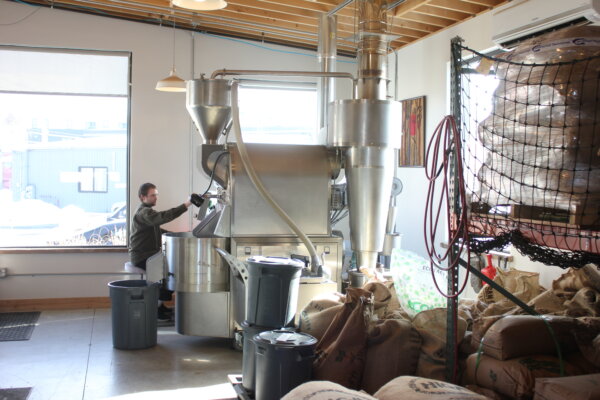 There’s no one-size-fits-all approach to noticing where you might have hidden assets, but the roasters we talked to shared some ways they’ve been able to better weather the moment by being flexible and creative.
There’s no one-size-fits-all approach to noticing where you might have hidden assets, but the roasters we talked to shared some ways they’ve been able to better weather the moment by being flexible and creative.
Over the course of 2024, Phoenix bought a new, climate-controlled warehouse, nearly tripling their pallet spaces and adding a forklift. “Cheaper real estate is a midwest advantage not everyone will have that helps balance the lower average median income of our area,” says Toby Reif. The extra space allows them to carry a larger position when they see a good opportunity, and to be able to hold onto coffee in a controlled climate so that quality won’t degrade. “We can hold 6 weeks of coffee at a time, which has been a great mental buffer,” he says.
They also get flexible on blends as needed. They had been planning to spin up a new blend and already had all of that weight booked prior to the price spike, so it was in place to use for their house blend instead of being able to roll out as intended.
One thing Rich Nieto did at Sweet Leaf cafes was dial back the TDS just under 10%, saving over a dollar per pound without noticeably compromising quality. They’ve also changed some of their blends: where they typically use the same origins, they’ve used new lots that fit the profile reasonably well with better pricing.
Will Pratt of Tandem isn’t afraid to do a little trial and error—to see how consumers react to prices rising, and adapt accordingly. “We’ve been around 13 years and have made plenty of mistakes, so it’s easier when you have that experience.”
Since tariff implementation has been volatile, no one can guarantee any particular outcome. Flexibility is more critical than ever.
We’re Here to Help
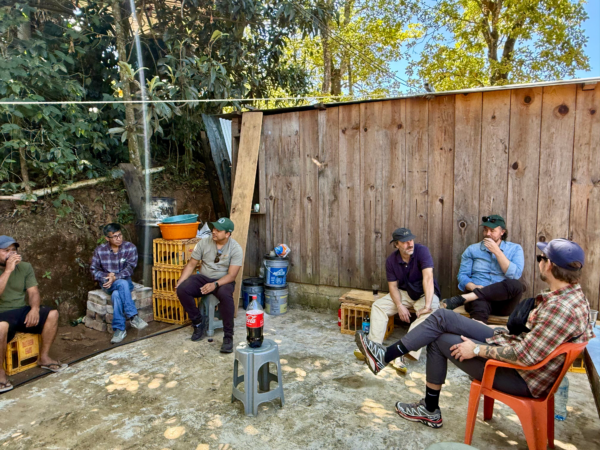 No matter what your strategy looks like, we’re here to help support you through this moment. If you have questions, concerns, or even just want to talk, get in touch. We’re working hard to provide stability at every link of the supply chain.
No matter what your strategy looks like, we’re here to help support you through this moment. If you have questions, concerns, or even just want to talk, get in touch. We’re working hard to provide stability at every link of the supply chain.
Interested in sourcing coffee with us? Reach out at info@redfoxcoffeemerchants.com. To learn more about our work, check out our journal and follow us on Instagram @redfoxcoffeemerchants.
